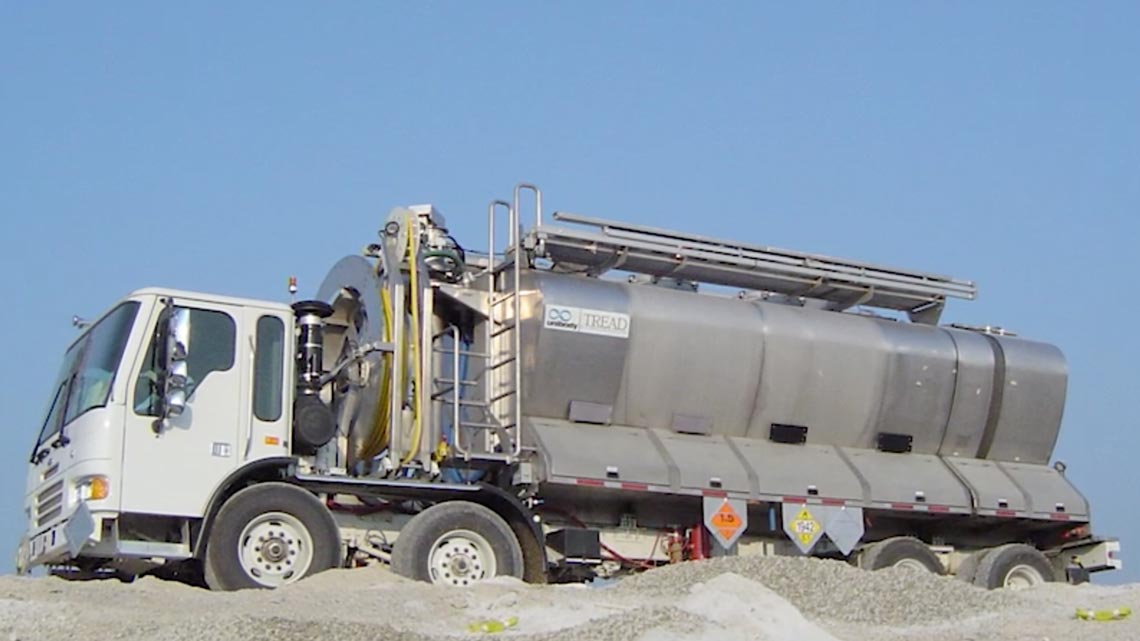Fast revisions and easy use of imported CAD data
Fast revisions and easy use of imported CAD data

Case Study
Maker of explosives handling equipment creates new designs in half the time it took using history-based modeling
Tread
Solid Edge with synchronous technology allows for fast revisions to existing designs and very easy use of imported CAD data
Meeting safety regulations and customers’ specifications
Tread Corp. manufactures bulk explosives handling equipment and machinery for mining, quarry and construction industries globally. Tread products include bulk trucks, bins, elevators, control systems, explosive storage, emulsion and mixing plants.
Because Tread trucks and other equipment carry up to 40,000 pounds of explosives, the company must design with care to meet safety requirements for diverse and harsh environments around the world. The company must also design to customer specifications, including truck capacity, pumping and auguring rates, mix ratios and compliance with the local regulations of more than 30 countries.
To meet this diverse set of requirements, Tread needs flexible computer-aided design (CAD) tools. “The engineering challenges boil down to doing the math and meeting certain specifications and pumping rates,” says Jim Truskey, designer and engineering software administrator at Tread. “Every customer has their own set of requirements. This one wants this brand of pumps and this one likes this brand. It’s very challenging having to make a truck basically function the same but with different components.” Also, the company must deal with short lead times and late-breaking customer requests. “Sometimes our trucks are still being designed in final assembly,” Truskey adds.
Use of synchronous technology accelerates designs from scratch
Tread uses Solid Edge® software from product lifecycle management (PLM) specialist Siemens Digital Industries Software to design all fabricated components, as well as to model purchased third-party equipment to determine form, fit, and function.
Tread designers are familiar with older history-only based modelers that use a feature approach to create and edit models. Those require a lot of preplanning to handle unforeseen changes that frequently arise. Conversely, history-free modeling is fast, but feature-less, with limited automated design capability.
The designers see Solid Edge as the best of both types of modeling, with highly automated features and dimensions that facilitate flexibility and near-instant performance. “We started using Solid Edge with synchronous technology shortly after it came out, and it’s made a world of difference for us,” Truskey says.
The company left it up to the individual designers as to which process (history-based or synchronous) they want to use. “Probably 50 percent of us are 100 percent synchronous. It’s very much a time saver,” Truskey adds. “When doing a new design, typically it takes me about half the time than it did using history-based modeling. I can change the design, pull it around, move faces and try various iterations.”
When modeling a part in place, Truskey explains that, “You don’t have to unravel and go back to step three of a 20-step history tree to get where you need to be. You can just grab a face and move it and see how it looks and if you don’t like it you can move it right back.” Tread designers also move assemblies and individual components around to see how they fit and then make faster changes “on the fly.”
